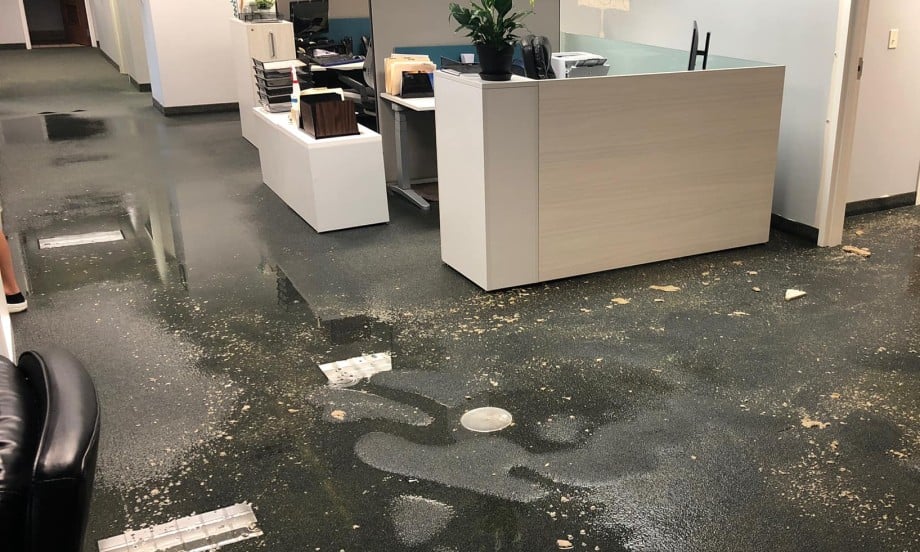
You’re making coffee, half-awake, when you notice that faint drip… drip… drip under the sink. It’s nothing major, you tell yourself – a few drops, maybe a loose pipe. You’ll fix it on the weekend.
Fast-forward two months. The floorboard’s warped, the cabinet door doesn’t close properly, and there’s a strange smell that Febreze can’t fix. Welcome to the world of water leaks – small, sneaky, and surprisingly destructive.
The thing about leaks is they’re patient. They wait quietly, often behind walls, under floors, or around fittings, while slowly transforming your house into an indoor swamp.
Most homeowners underestimate water. It doesn’t take a flood to cause major damage – just a tiny, persistent drip. Water has one mission: to go where it shouldn’t.
Here’s what that seemingly harmless trickle is really doing while you ignore it:
In fact, according to insurance data, the average household water-damage claim is around $11,000. That’s enough to buy 73 aquaHALT devices – each designed to stop the problem before it even begins.
There’s a fascinating thing about leaks – everyone knows they’re bad, but almost no one acts right away. Why? Because they don’t feel urgent… until they are.
When your roof leaks, you panic. When your pipe bursts, you panic. But when your sink slowly drips, you shrug. The irony? That drip can cause more long-term damage than either of those sudden disasters, because it quietly corrodes materials over time.
So if you’re thinking, “It’s just a few drops,” remember: those “few drops” might be the most expensive ones you ever ignore.
Leaks don’t exactly send invitations – but they do leave clues. Here are the telltale signs your home might be harboring a watery secret:
You haven’t started a backyard water park, but your bill looks like you did. A sudden spike usually means a hidden leak.
That “basement smell” upstairs isn’t normal. Moisture trapped in walls or under floors gives off that earthy, mildew-like odor.
Your walls are literally crying. Moisture trapped behind paint or paper causes bubbles, blisters, or peeling.
When wooden surfaces start bowing or curving, they’re soaking up moisture from somewhere nearby.
If you’ve cleaned it and it returns, that’s not bad luck – it’s a leak feeding it from behind.
Spot these signs early and you’re halfway to saving your home (and your weekend).
We’ve already talked about how leaks destroy materials, but let’s put numbers on the pain:
And that’s not counting the stress, time, and disruption of repairs. You’ll be living with fans, dehumidifiers, and that unforgettable “construction zone chic” aesthetic for weeks.
Compare that to $150 for a leak detection device. The math isn’t hard – but apparently, water loves teaching lessons the expensive way.
Some leaks are easy to see – a dripping faucet, a puddle under the washing machine. Others are experts at hide-and-seek.
They lurk behind drywall, beneath tiles, or inside ceilings, silently destroying things from within. By the time you notice a stain, it’s already been there for weeks.
That’s why early detection isn’t just helpful – it’s everything. The faster you find a leak, the less damage it can do.
Here’s where aquaHALT, the smart (but delightfully simple) leak detection device from waterAUTOMATION, earns its cape.
It doesn’t need Wi-Fi, Bluetooth, or a PhD in smart-home setup. It runs on 2×AA batteries and sits quietly under sinks, near washing machines, or behind your fridge – always listening, always ready.
When it senses even the smallest presence of water, it sounds the alarm before the damage starts. No complicated installation. No monthly fees. Just good, old-fashioned peace of mind wrapped in clever engineering.
Water doesn’t respect schedules – it leaks on Sundays, holidays, and when you’re away on vacation. That’s why aquaHALT never clocks out.
For less than what you’d spend on a dinner date, you get 24/7 protection that saves you from the world’s worst wake-up call: the sound of splashing where there shouldn’t be any.
Two AA batteries. One smart idea. Zero panic.
Let’s be real – no one brags about installing a leak detector. But everyone wishes they had one after the damage is done.
You don’t need to wait for a leak to ruin your day, your walls, or your savings account. Catch it early. Stop it fast. Sleep better.
That’s what aquaHALT does – quietly, constantly, and for just $150.
Because peace of mind shouldn’t cost thousands.